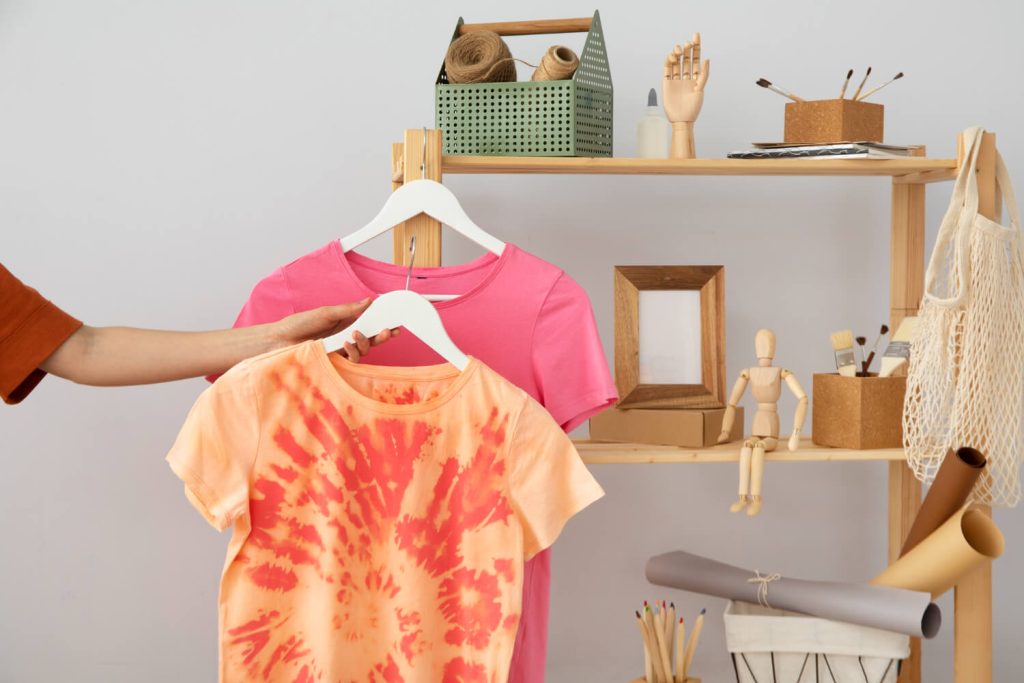In today’s fast-paced world, fashion trends change in the blink of an eye, often pushing consumers toward a cycle of constant shopping and accumulation. This trend has led to a rise in fast fashion—a phenomenon that prioritizes cheap, disposable clothing, contributing to environmental pollution and waste. As awareness of the environmental and social consequences of this industry grows, many individuals are turning toward building a stylish and eco-friendly wardrobe that aligns with their values.
Building a wardrobe that’s both fashionable and sustainable is a conscious effort, but it’s an investment that pays off not only for the environment but also for your personal style. Here’s how you can create a wardrobe that marries style with sustainability.
1. Start with Quality Over Quantity
The foundation of a sustainable wardrobe starts with quality. When it comes to clothing, investing in pieces that are durable and timeless is far better than buying cheap items that will wear out quickly or go out of style. Focus on purchasing high-quality fabrics like organic cotton, linen, and wool, which tend to last longer and are often biodegradable.
Opt for pieces with classic designs that won’t go out of style. A well-constructed white button-down shirt, tailored blazer, or pair of high-quality jeans can be mixed and matched for a variety of looks, making them staples that stand the test of time. The key to building a stylish wardrobe is to focus on pieces that will still look great and remain functional for years.
2. Embrace Sustainable Fabrics
Fabrics play a crucial role in determining how sustainable your wardrobe is. Certain materials are more eco-friendly than others, as they require less energy, water, and chemicals to produce. For instance:
- Organic Cotton: Grown without pesticides and chemicals, organic cotton is much better for the environment compared to conventional cotton.
- Linen: Made from the flax plant, linen is biodegradable and requires less water and pesticides.
- Recycled Fabrics: Recycled polyester and nylon are made from post-consumer plastic bottles and fabric waste, giving a second life to materials that would otherwise end up in landfills.
- Hemp: A naturally eco-friendly material that requires little water and no pesticides to grow, hemp is durable, breathable, and biodegradable.
- Tencel/Lyocell: Made from sustainably sourced wood pulp, Tencel is produced in a closed-loop system, meaning the chemicals used in the manufacturing process are recycled, minimizing waste.
By opting for these materials, you contribute to reducing the harmful effects of the fashion industry on the planet while still looking stylish.
3. Buy Less, Choose Wisely
Building a sustainable wardrobe isn’t about buying more; it’s about buying smarter. Adopting a “less is more” mentality can help you avoid impulse purchases and trends that quickly fade away. Instead of constantly updating your wardrobe with the latest styles, take a more mindful approach to purchasing clothes.
- Capsule Wardrobe: A capsule wardrobe is a small collection of versatile, high-quality clothing items that you can mix and match to create various outfits. By curating a limited number of items, you reduce clutter, prevent overconsumption, and make getting dressed easier.
- Conscious Shopping: Before making a purchase, ask yourself if the item fits with your personal style, is versatile, and is made from sustainable materials. If the answer is yes, it’s more likely to be a piece you’ll wear often, rather than a one-time purchase.
By focusing on quality, versatility, and thoughtful choices, you’ll create a wardrobe that not only supports your lifestyle but also reduces the negative impact on the environment.
4. Support Ethical Brands
Supporting brands that are committed to sustainability and ethical practices is a great way to build an eco-friendly wardrobe. Look for clothing companies that prioritize transparency in their production processes and who are committed to ethical labor practices. Many brands are now focusing on making clothes with fair trade-certified materials, ensuring that workers are paid fair wages and work in safe conditions.
Some popular eco-friendly clothing brands include Patagonia, Reformation, and Stella McCartney, all of which focus on sustainability through responsible sourcing, eco-friendly materials, and ethical manufacturing. When shopping, always do your research to ensure that the brands you support align with your sustainability values.
5. Second-Hand and Vintage Shopping

One of the best ways to build a stylish and eco-friendly wardrobe is by embracing second-hand and vintage shopping. Not only does buying pre-loved clothing reduce demand for new resources, but it also allows you to find unique and one-of-a-kind items that might not be available in stores.
Thrift stores, consignment shops, and online platforms like Depop, Poshmark, or ThredUp make it easier than ever to shop sustainably. Vintage clothing, in particular, has a timeless appeal, with many garments made from higher-quality materials than what’s available in modern fast fashion stores.
Shopping second-hand is an affordable and eco-conscious way to find new additions to your wardrobe without contributing to overproduction or waste.
6. Care for Your Clothes
Proper care and maintenance of your clothes can significantly extend their lifespan, reducing the need to replace them frequently. Simple habits like washing clothes in cold water, air-drying them instead of using a dryer, and avoiding over-washing can help prevent wear and tear.
Additionally, repair and upcycle your clothing rather than throwing it away. A small tear or missing button is easy to fix and can give a garment a longer life. There are many resources online that can teach you basic mending skills, so you can learn to patch up or restyle older clothes instead of letting them sit unused.
7. Consider the End of Life
When the time comes to part with an item of clothing, consider its end-of-life impact. Don’t just toss it in the trash—look for options to recycle or repurpose the fabric. Many eco-friendly clothing brands offer take-back programs where you can send back your old clothes for recycling, ensuring they don’t end up in a landfill.
Alternatively, you can donate your clothes to charity, pass them on to friends or family, or even use fabric scraps for DIY projects. By thinking about the life cycle of your clothing, you can ensure that your wardrobe remains as eco-friendly as possible from start to finish.
Final Thoughts
Building a stylish and eco-friendly wardrobe doesn’t require you to sacrifice your love for fashion. By investing in high-quality, sustainable pieces, supporting ethical brands, and embracing second-hand shopping, you can make a positive impact on the planet while maintaining a wardrobe that’s both fashionable and functional.
Sustainability is about making informed choices that benefit not only you but also the environment. With a little effort and mindful decision-making, you can create a wardrobe that reflects your values and your personal style, without contributing to the damaging effects of fast fashion.

